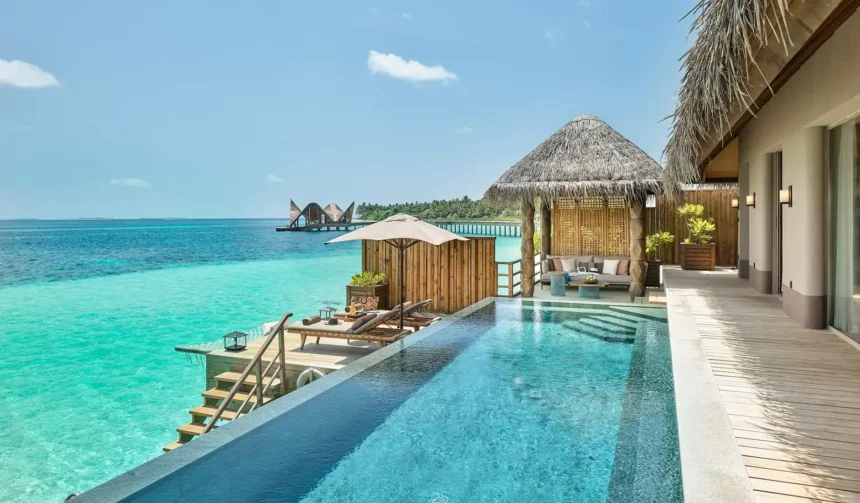Introduction
Travel has always offered a gateway to wonder, renewal, and escape yet in today’s world, the price of exploration is measured not only in dollars but in ecological impact. As global awareness of climate change, biodiversity loss, and social inequities has grown, so too has the desire among discerning travelers to reconcile indulgence with responsibility. Enter the eco-conscious escapist: the modern voyager who refuses to choose between luxury and sustainability. For this new breed of globetrotter, the ultimate getaway contributes positively to local ecosystems and communities while providing all the comforts and bespoke experiences expected of a five-star resort.
Luxury resorts around the world have responded by pioneering green innovations, from net-zero energy buildings to reef-restoration dive programs, ensuring that every sumptuous suite and gourmet meal leaves a regenerative footprint. This blog post explores the evolution, practices, and future of sustainable luxury resorts offering actionable guidance for travelers who wish to immerse themselves in extravagance that uplifts people and planet alike. Read on to discover how eco-luxury is reshaping hospitality, the premier destinations to consider, and the steps you can take to plan an unforgettable, environmentally responsible escape.
The Evolution of Sustainable Luxury Travel
Sustainable tourism once conjured images of basic eco-lodges and rustic cabins. Today, it encompasses opulent hideaways where solar-powered infinity pools, halal-certified organic eateries, and artisan-crafted furnishings coexist seamlessly with cutting-edge environmental stewardship. This transformation has been driven by three key forces: heightened consumer expectations, stringent international certifications, and relentless innovation in green technologies.
In the early 2000s, eco-labels such as Green Globe and EarthCheck emerged to offer travelers transparent benchmarks for environmental performance. Initially, only a handful of budget-minded properties sought certification; luxury brands largely viewed sustainability as optional window dressing. However, as affluent guests began demanding crumb-free alternatives to disposable plastics, carbon-neutral menus, and locally sourced amenities, even legacy hospitality players invested heavily in eco-upgrades. Today, leading resort groups rival Silicon Valley start-ups in their deployment of smart-grid microgrids, on-site wastewater treatment, and blockchain-enabled supply-chain transparency.
Concurrently, the concept of “regenerative tourism” has gained currency, emphasizing not just minimal harm but active restoration whether by coral garden replanting, rewilding deforested areas, or funding education programs for adjacent communities. For the eco-conscious escapist, this shift from “do no harm” to “leave better than you found it” represents the pinnacle of responsible travel.
Defining Sustainable Luxury Resorts
At its essence, a sustainable luxury resort delivers a full spectrum of high-end services lavish accommodations, personalized butler service, bespoke excursions while embedding environmental and social responsibility into every facet of its operations. These properties typically pursue multiple internationally recognized certifications:
- LEED (Leadership in Energy and Environmental Design): Assesses building site sustainability, water efficiency, energy use, materials, and indoor environmental quality.
- Green Globe: Focuses on biodiversity conservation, social community benefits, staff engagement, and carbon management.
- EarthCheck: Measures a resort’s performance against benchmarks for greenhouse gas emissions, waste management, and community outcomes.
Achieving and maintaining these certifications requires year-round data collection, third-party audits, and transparent public reporting. Beyond the paperwork, genuine eco-luxury resorts integrate sustainable principles into their DNA: using locally quarried stone and reclaimed wood in construction, powering guest villas with solar and wind, composting all organic waste, and employing rain gardens and permeable paving to recharge aquifers.
Core Pillars of Sustainability in Luxury Resorts
Renewable Energy and Carbon Neutrality
The backbone of any green resort is a reliable, low-carbon power supply. Many properties harness solar photovoltaic arrays and solar thermal systems for electricity and hot water, while micro-wind turbines and small-scale hydroelectric installations further offset grid dependence. On remote islands and in mountainous retreats, biofuel-powered generators running on locally sourced agricultural waste bridge any remaining gaps, ensuring continuous, carbon-neutral operations. Some trailblazers are even experimenting with biogas digesters that convert food scraps into renewable methane for cooking and heating.
Water Conservation and Management
Luxury resorts are traditionally water-intensive, thanks to spa treatments, expansive landscaping, and lavish pools. Sustainable properties counterbalance this with multi-pronged strategies:
- Rainwater Harvesting: Collects roof runoff for irrigation and laundry.
- Greywater Recycling: Treats water from showers and sinks on-site for reuse in flushing toilets and watering gardens.
- Low-Flow Fixtures: Delivers a high-pressure shower experience while cutting consumption by up to 50 percent.
By combining smart metering, leak detection sensors, and reclaimed wetlands for natural filtration, these resorts demonstrate that aqua-luxury and conservation need not be mutually exclusive.
Zero-Waste and Circular Economy Initiatives
The era of single-use plastics has largely ended at sustainable luxury resorts. Glass bottles, bamboo straws, and refillable amenities have become standard, while back-of-house waste segregation enables up to 90 percent of refuse to be composted, recycled, or repurposed. Innovative “waste-to-wealth” programs transform glass and aluminum into decorative decor, turning what was once landfill-bound into bespoke art installations. Meanwhile, food-waste reduction software helps kitchen teams forecast demand accurately, minimizing spoilage and funneling any surplus into local food-security programs.
Community Engagement and Cultural Preservation
True sustainability transcends environmental metrics it encompasses social equity and cultural vitality. Leading eco-resorts collaborate with neighboring villages and indigenous groups to offer fair-wage employment, vocational training, and profit-sharing arrangements. On-site craft centers provide artisans with workspace and retail outlets, preserving traditional weaving, pottery, and carving techniques. Educational scholarships, medical clinics, and ecosystem-restoration partnerships further cement the resort’s role as a force for local prosperity.
Exemplary Sustainable Luxury Resorts Around the World
Six Senses Laamu, Maldives
Nestled amid turquoise lagoons, Six Senses Laamu operates on a 100-percent solar-powered microgrid. Its signature “Coral IVF” program invites guests to assist marine biologists in replanting coral fragments on degraded reefs. Delicious zero-waste menus showcase island-grown produce, while overwater villas feature reclaimed teak and driftwood furnishings.
Soneva Fushi, Maldives
Prominent for its “Waste to Wealth” initiative, Soneva Fushi transforms hotel waste glass, aluminum, fishing nets into art and furniture crafted by local artisans. Its innovative “Den” dessert bar reduces food waste by repurposing unused ingredients into creative confections.
Fogo Island Inn, Canada
Perched on Newfoundland’s rugged coast, Fogo Island Inn is constructed primarily from salvaged boat timber. Profits are reinvested in community-led art, education, and heritage preservation, while its geothermal heating system and LED lighting deliver a 40-percent reduction in energy use compared to conventional luxury lodges.
Lapa Rios, Costa Rica
Deep within the Osa Peninsula rainforest, Lapa Rios channels 20 percent of its revenue into biodiversity research and anti-poaching patrols. Guests can join nightly amphibian surveys and help plant native trees in recently deforested areas.
Longitude 131°, Australia
Overlooking the sacred Uluru monolith, Longitude 131° offers glamping expeditions in tented pavilions built on stilts to preserve desert vegetation. Solar arrays meet all electricity needs, while a solar-thermal desalination unit provides potable water with minimal energy expenditure.
Immersive Eco-Friendly Experiences and Activities
Conservation-Led Wildlife Safaris
In East Africa, several luxury safari camps operate in partnership with wildlife conservancies. Travelers join rangers on anti-poaching patrols, assist with tracking collared elephants, and contribute to community outreach programs aimed at mitigating human-wildlife conflict.
Reef Regeneration and Marine Ecology
From the Seychelles to Thailand, resorts offer guided dive excursions where guests can transplant coral nurseries and learn about reef-building science. Evening lab sessions introduce participants to data-analysis software that monitors reef health.
Agro-Tourism and Farm-to-Table Cooking
Many properties maintain organic demonstration farms where guests harvest heirloom fruits, vegetables, and herbs. Cooking classes then teach them to prepare regional specialties using zero-miles ingredients, deepening appreciation for local agricultural traditions.
Cultural Immersion Workshops
Resorts often host daily workshops textile weaving, bamboo instrument crafting, traditional dance lessons led by master artisans. These experiences foster genuine cross-cultural exchange while providing sustainable livelihoods.
Holistic Wellness in Nature
Eco-resorts integrate indigenous healing practices such as forest bathing, sound-healing rituals using local crystals, and aroma-therapy with wild-harvested botanicals into signature spa treatments, delivering rejuvenation for both body and mind.
Benefits for Travelers and Host Communities
Travelers at sustainable luxury resorts enjoy the same or superior amenities as traditional properties, with the added satisfaction of ethical engagement. High-end comforts coexist with authentic local experiences, fostering deeper connections to place and purpose. Communities benefit from job creation, cultural preservation, and direct investment in health, education, and infrastructure. As tourism revenues grow, municipalities can fund renewable-energy grids, schools, and conservation trusts, catalyzing a virtuous cycle of prosperity and environmental stewardship.
Practical Tips for Planning a Sustainable Luxury Getaway
- Verify Certifications: Look for LEED, Green Globe, or EarthCheck accreditation, and review resorts’ annual sustainability reports.
- Ask Direct Questions: Inquire about energy sources, water-usage targets, waste-management practices, and community-investment programs.
- Book Experiential Packages: Choose all-inclusive rates that bundle conservation excursions, farm-to-table meals, and cultural workshops to ensure revenues flow back into local initiatives.
- Travel Off-Peak: Visit during shoulder seasons to reduce ecosystem strain and secure lower rates.
- Offset Remaining Emissions: Even the greenest resort may rely on air travel—consider reputable carbon-offset providers that fund reforestation and renewable-energy projects.
Addressing Greenwashing and Ensuring Authenticity
As sustainability sells, some resorts oversell. To avoid greenwashing:
- Demand transparent impact data rather than vague “eco-friendly” claims.
- Check for third-party audits and readily accessible performance dashboards.
- Seek properties that support local NGOs, universities, or U.N. Environmental Programme partnerships.
Informed travelers wield their purchasing power like a vote for genuine stewardship—rewarding resorts that substantively advance ecological and social goals.
The Economic and Environmental Impact
Sustainable luxury tourism channels high-value spending into remote regions, generating funding for conservation, infrastructure, and social programs. According to a 2023 World Tourism Organization report, every dollar spent at eco-certified properties yields, on average, 1.8 dollars in local economic multiplier effects—surpassing conventional resorts by 30 percent. Environmentally, these resorts sequester carbon through reforestation, protect endangered species via dedicated reserves, and reduce pollution with advanced waste-treatment systems.
Innovations and the Future of Sustainable Luxury Resorts
Looking forward, several emergent trends promise to redefine eco-luxury:
- Off-Grid Living: Next-gen microgrids combining solar, wind, and hydrogen fuel cells will enable resorts to operate entirely independent of national grids.
- Biophilic Architecture: Living walls, green roofs, and indoor-outdoor structures will blur boundaries between built and natural environments.
- Digital Sustainability Dashboards: In-room tablets and mobile apps will let guests track their personal carbon and water footprints in real time, gamifying low-impact behaviors.
- Regenerative Finance Models: Profit-sharing agreements will allocate a fixed percentage of revenues to local conservation trusts, ensuring perpetual funding streams.
As these innovations mature, the eco-conscious escapist will find ever more seamless ways to indulge in opulence that uplifts the planet.
A Call to Conscious Travel
The age of extractive tourism is ending. For the eco-conscious escapist, luxury travel today means luxuriating in nature’s splendour while actively safeguarding it. Sustainable luxury resorts demonstrate that indulgence and ecological stewardship can coexist and indeed, that the most extraordinary escapes are those that replenish the ecosystems and communities upon which they depend.
By choosing properties with verifiable green credentials, engaging in hands-on conservation activities, and advocating for transparent impact reporting, travelers become catalysts for positive change. In doing so, they help forge a future where the thrill of discovery and the joy of relaxation leave a regenerative legacy for generations to come.

